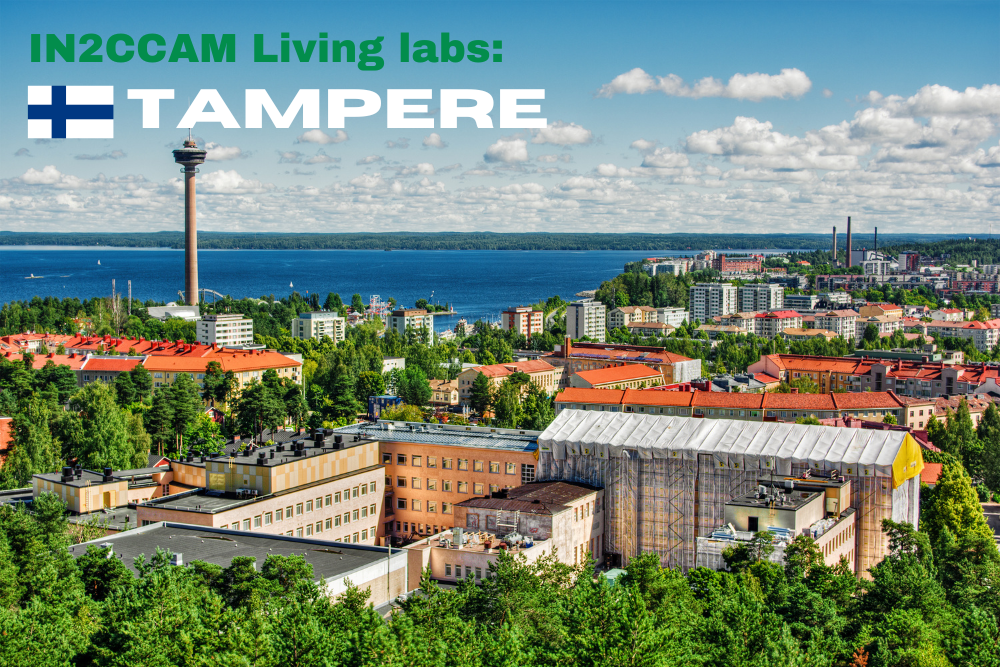The European project IN2CCAM aims to develop, implement, and assess novel services and technologies for seamless Connected, Cooperative, and Automated Mobility (CCAM) integration into traffic management. To this end, six Living Labs in diverse countries are working on several use cases, addressing real-life scenarios while adapting to different geographical and cultural contexts to ensure scalability. ‘IN2CCAM Uncovered’ is the project’s campaign to unveil the activities conducted by each Living Lab and delve deeper into the significance of IN2CCAM. We begin with Tampere, where partners VTT and Business Tampere confront unique geographical conditions, extreme winter temperatures, and the ambitious aim of reaching climate neutrality by 2030. Let’s dive in!
Tampere, with a population of 240,000, is a resilient Finnish city located in a challenging geographical setting. Nestled on an isthmus between two lakes, the city relies heavily on public transport to keep residents well connected. The recently introduced tram network links the city, complementing other transportation options. In its commitment to becoming a sustainable city and overcoming the tram’s high demand, Tampere is fostering new mobility solutions to help achieve carbon neutrality. The Hervanta district is a benchmark in the search for smart solutions, testing the introduction of automated vehicles to complement conventional public transport services.

Focused on improving last-mile mobility for individuals, IN2CCAM is centring the Tampere Living Lab effort on the integration of four automated vehicles into the traffic network. The vehicles are equipped with smart sensors that help them communicate and navigate precisely, ensuring safety and efficiency. They interact with traffic lights to adjust their speed, and detect obstacles or lane issues and respond accordingly. Additionally, they are coordinated with other modes of transportation, like trams, to improve traffic flow in the area and enhance overall traffic management in the district.
The Living Lab is managed by VTT, focused on advancing CCAM and contributing with two automated vehicles, and supported by Business Tampere, which drives regional economic development that fosters business connections. Both organisations actively participate in ITS Factory, an innovation hub for intelligent urban transport in Tampere.

Tampere’s case specifically aims to benefit the people of Hervanta by providing a safe and efficient transportation network, making their journeys smoother and safer. By providing a seamless public transport network, Tampere attempts to prioritise the use of alternative, more sustainable transport modes over private cars, with the consequent environmental impact and a notable congestion reduction.
“By making local travel smoother and safer in Hervanta, people will find it easier to use automated vehicles alongside public transport. These vehicles provide better information to manage traffic, which benefits everyone on the road. These services will improve the background operations that users might not see directly, but they’ll make public transportation work better overall.”
Mikko Tarkiainen (VTT)
With this, the Tampere Living Lab is embarking on a journey to demonstrate the feasibility of automated and connected vehicle services in real-world traffic conditions. They are taking cautious steps with a limited number of vehicles and space. If these trials prove successful, there is potential for more extensive deployments that will contribute to reaching Tampere’s ambitious goal of achieving carbon neutrality by 2030.

VTT Remote Operation Centre

3.5 km AV shuttle route in Hervanta centre

Tram warning app for AV safety driver




